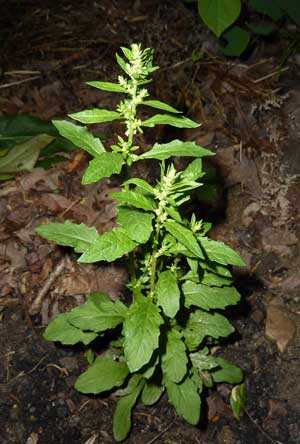Time to trim
Tuesday, 27 April 2010

John made a selection for the garden this year, opting to give a healthy epazote (Dysphania ambrosioides) specimen a home in our (shady) back yard.
We use epazote in our “Oaxaca meal,” which features black beans (pureed) and Oaxacan cheese and hopefully still-warm tortillas.
The epazote goes both in the beans, and in the rewarmed tortillas with the cheese—they melt together.
We use the epazote leaves, not the seeds nor the stems. They have a strong flavor, which is their charm. They have a very earthy plant taste, and I think most people who are unfamiliar with it tend not to like it much.
We adore it.
The name, like many specific references to things native to what is now Mexico, is derived from a native language, with the pronunciation smoothed to reflect Colonial Spanish phonetics. The original word ends with that tricky “-otl” suffix, which, when properly pronounced has no vowel sound between the “t” and the “l” sounds (don’t say anything like “tul”). English speakers can better approximate the linked sounds when beginning a word not ending a word. In my experience.
UPDATE: Our serendipitous visitor escaped Our Fair City just as the pulse of rush-hour traffic was burgeoning, we hope without complications. At least, we know she got on I-75 safely, in heavy yet swift-moving traffic.